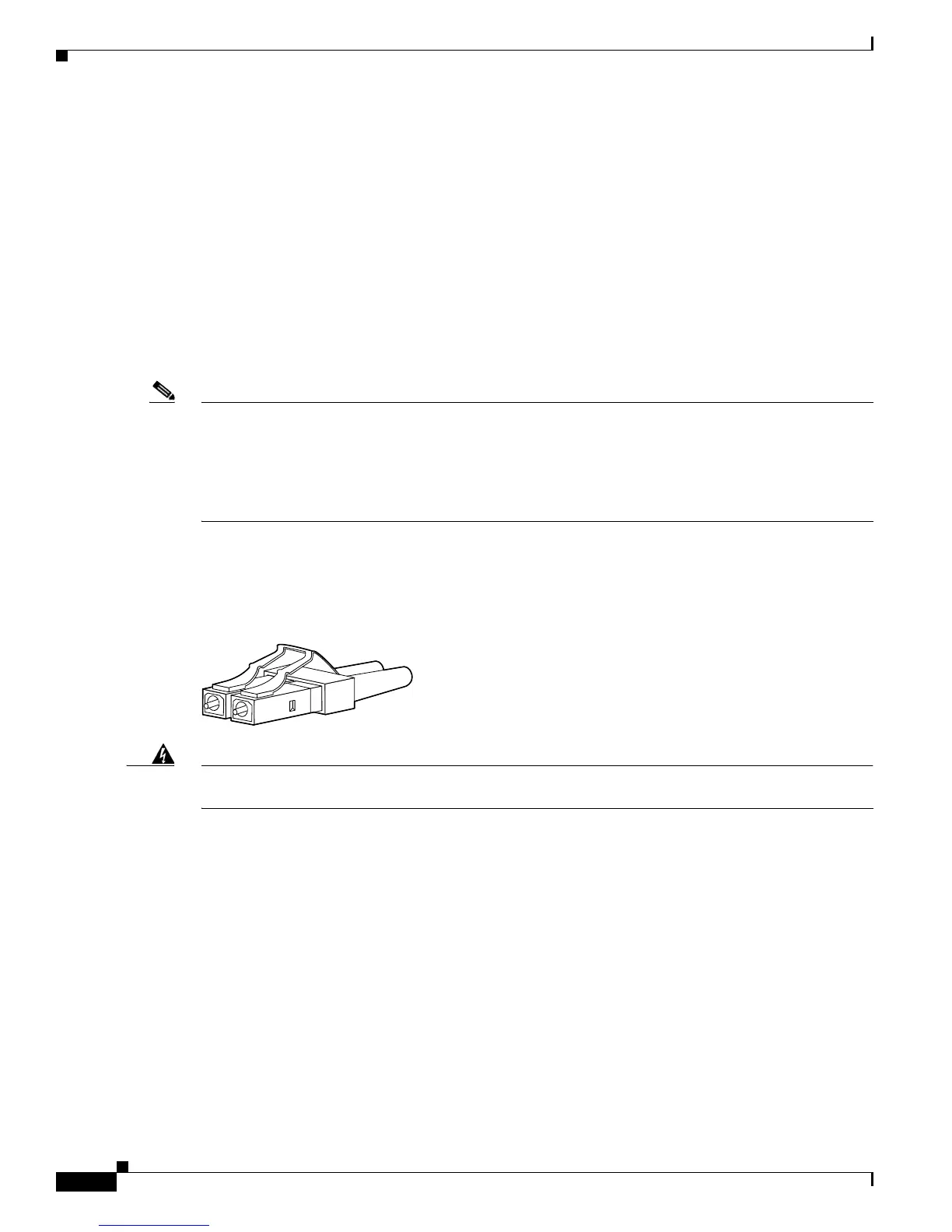B-2
Cisco CGS 2520 Hardware Installation Guide
OL-31444-01
Appendix B Connector and Cable Specifications
Connector Specifications
When connecting 10/100 ports to devices such as servers, workstations, and routers, you can use a two
or four twisted-pair straight-through cable wired for 10BASE-T and 100BASE-TX. Figure B-5 shows
the two twisted-pair straight-through cable schematics. Figure B-7 shows the four twisted-pair
straight-through cable schematics.
When connecting the ports to other devices, such as switches or repeaters, you can use a two or four
twisted-pair crossover cable. Figure B-6 shows the two twisted-pair crossover cable schematics.
Figure B-8 shows the four twisted-pair crossover cable schematics.
If auto-MDIX is disabled, use a straight-through cable to connect ports when only one port is labeled
with an X. Use a crossover cable to connect ports when both ports are labeled with an X or when both
ports are not labeled with an X.
You can use Category 3, 4, or 5 cabling when connecting to 10BASE-T-compatible devices. You must
use Category 5 (or higher) cabling when connecting to 100BASE-TX-compatible devices.
Note You can use the mdix auto interface configuration command in the CLI to enable the automatic
medium-dependent interface crossover (auto-MDIX) feature. When the auto-MDIX feature is enabled,
the switch detects the required cable type for copper Ethernet connections and configures the interfaces
accordingly. Therefore, you can use either a crossover or a straight-through cable for connections to a
copper 10/100, 10/100/1000, or 1000BASE-T SFP module port on the switch, regardless of the type of
device on the other end of the connection.
SFP Module Connectors
Figure B-2 Fiber-Optic SFP Module LC Connector
Warning
Invisible laser radiation may be emitted from disconnected fibers or connectors. Do not stare into
beams or view directly with optical instruments.
Statement 1051

